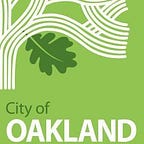RADICAL AMBITION — Civic Design Lab Govloop Series #7
For 12 weeks, Brandon Greene was a weekly contributor for Govloop.com. The weekly posts were used to discuss the work and challenges of innovation. Those posts will now be reposted here.
This week, the New York Times released “The 1619 Project,” a multidimensional media project to commemorate the 400thanniversary of the arrival of the first enslaved people in America. Like all innovative projects, this one started with a pitch “to dedicate an issue of the Sunday magazine to examining the ways the legacy of slavery continues to shape our country.”
Among the many things that are notable about this project is the audacity and risk-taking involved, knowing and understanding that, “It’s very powerful, and it’s very fraught at the same time,” as Nicole Hannah-Jones, the visionary behind the project, noted.
Not only was the project to include scholars with in-depth expertise, but particular attention was paid to who those scholars and contributors would be. According to the New York Times article describing the origin of the project, “almost every contributor in the magazine and special section — writers, photographers and artists — is black, a non-negotiable aspect of the project that helps underscore its thesis.”
Every single detail was thoughtfully considered “from which kind of fonts to use to the illustrations, was an attempt to balance the events of the past with their present-day implications.”
As I have been pouring over the articles contained within the project, it has made me think a lot about the work that I am engaging in. I have been wondering if it is audacious enough? At the same time, I have wondered just what would it take move something as bold at the government level?
It’s unfortunate that the NY Times article doesn’t go into more detail about the compromises, if any, that had to be made to get full buy-in. I would love to know, who were the champions and detractors? I would also love to know about how Nicole Hannah-Jones remained unflinching in her vision, “as much as I hope white readers will read it and have their minds blown, I hope that black people will read it, and feel a sense of ownership over this country and a sense of pride in our resilience . . . I hope to reframe the way we see ourselves in America.”
In my short time in government, I have come to see if not yet fully understand the penchant to focus on small victories. These victories are used as trust-building exercises, as a way of building up interest and comfort so as to gradually move on to bigger things.
I wonder though, if that sort of focus really creates the inertia that we think it does?
I am curious if this sort of focus then becomes what stands in the way of truly innovative projects?
I am uncertain of the answers to these questions but as I continue to read through the 1619 Project, I am inspired and convinced that at a minimum I need to consider being more bold — and encourage others to be as well — as we envision what’s possible.
Are you involved in projects that are daring in their visioning? If so, how do you preserve your vision as it goes through the approval process?
For more about how we are approaching our work, check out the previous posts about vulnerability, leadership, trusting the process, failing safely, using data in decisions, and how to discover untapped expertise on your team.
Brandon L. Greene is a GovLoop Featured Contributor. He is the Manager of the Civic Design Lab in Oakland. Brandon is a graduate of Boston University Law School where he was a Public Interest Scholar and Martin Luther King Social Justice Fellow. Previously, Brandon was an Attorney and Clinical Supervisor at the East Bay Community Law Center where he created and lead the decriminalization of poverty clinic. Brandon’s article Depraved Necessities: Prison Privatization, Educational Attainment and the Path to Profit was published in 2013 by SRBLSA Law Journal. His forthcoming articles will be published in the Harvard Blackletter Law Journal and the Berkeley Criminal Law Journal. Twitter: @brandonlgreene. You can read his posts here.
